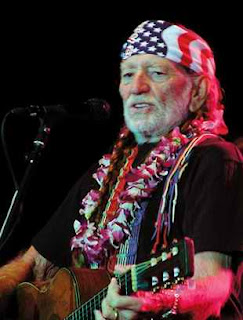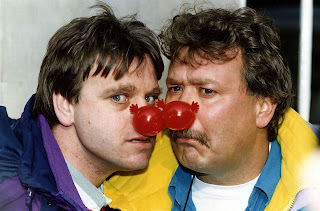The 1970s allowed us all to dip our disco biscuit in the tea of music. Genres such as Funk, smooth jazz and jazz fusion emerged whilst Soul remained as popular as it had been in the 1960s. In the previous decade, someone had accidentally broken an amplifier to discover distortion which in turn gave rise to rock music. This had morphed into punk rock by the end of the 70s but that soon disappeared to everyone’s relief. In the newly discovered Rock genre we had to put up with glam rock, hard rock, progressive rock and heavy metal.
Reggae was a lovely way to escape the bland cheap-suited crooners who sat on stools with impossibly skinny microphones singing about their dead dogs and what not. Bored with guitars, pop pickers’ interest was pricked by the emergence of the synthesizer and Gary Numan emerged from the darkness like a scary robot with his single ‘Cars’ which was all about being in his car.
Guitars, long hair and sweaty men were the order of the day when looking for something loud and incoherent to listen to in between sandwiches on a Saturday afternoon. Status Quo, Led Zeppelin, Black Sabbath and Kiss were all fabulously enthusiastic after getting kicked out of their respective homes for making too much noise as youngsters. They discovered that people enjoyed this cacophony of random too-loud sound and so went and made louder sounds in Stadiums and on stages in large fields. Prog rock introduced audiences to keyboard and guitar solos that started in the 70s and are still going on to this day with no real coherent point. Punk seemed like a necessary evil; it was awful to listen to but a lot of artists played it in order to get record contracts when it was popular and then go off and make the music they wanted to make with the big royalty cheques. The aforementioned Gary Numan played punk against his better judgement, as did The Police in order to sneak in the back door of a record label unwilling to listen to what they could actually do. Blondie sort of made punk ‘listenable’ but not really until they became a pop/ska band.
Pop songs were few and far between in the 70s, being gently caressed but never mounted by groups such as the Bay City Rollers, The Osmonds, Queen, The Carpenters and The Jackson 5. There were some comedy solo artists (who I’m sure didn’t mean to be funny) in Leo Sayer, Barry Manilow and Engelbert Humperdinck (which isn’t his real name, the weirdo).
Barbra Streisand shouted her way into the charts but not in the same way the Sex Pistols did, and Carly Simon continued the trend of having massive hair (see also Rod Stewart, Donna Summer and Lionel Richie).
The members of Fleetwood Mac all had loads of fights with each other and then released ‘Rumours’ which was the best-selling album of the 70s. Don McLean wrote ‘American Pie’ about Buddy Holly. Roberta Flack wrote ‘Killing me softly’ about Don McLean’s song about Buddy Holly. Thankfully, nobody wrote a song about Roberta Flack writing a song about Don McClean writing about Buddy Holly. Sadly, Bruce Springsteen became popular, as did Paul Simon despite throwing an ego-fuelled hissy fit about Art Garfunkel getting all the credit for ‘Bridge over troubled water’ even though he didn’t write it.
Diana Ross sang ‘Ain’t no mountain high enough’ and unleashed this now clichéd phrase on almost every song ever written ever since. Stevie Wonder became immensely popular in the 1970s and helped funk become a defined genre on its own merits. Where James Brown had pioneered, so Kool and the Gang made sure the genre would die before the end of the decade. Marlon Jackson and his other four brothers who I forget the names of, conquered the charts as the Jackson 5. ‘I want you back’, ‘ABC’ and ‘I’ll be there’ all smashed the top 10 and helped launch the galactic solo career of their lead singer, Jermaine.
Willie Nelson wasn’t just a banned wrestling hold, it was also a popular country music artist and Nashville legend. Along with luminaries such as Glen Campbell and Tammy Wynette, country music was dotted all through the chart places in the 70s. This was helped by the continual repeats of Clint Eastwood films on TV on Sunday afternoons. Olivia Newton John, Marie Osmond and Kenny Rogers all pretended to be country artists at some point and managed to fool country fans into buying their records.
Olivia Newton John went as far as being voted vocalist of the year by the Country Music Association in 1974. This alone throws the entire genre into question. In fact, if someone had just twanged a comb on the side of a table and called it ‘country’ it would probably have been gratefully accepted. It enraged some country fans however, especially Hale and Pace who eventually let their anger go in the late 80s by singing ‘Let’s stonk, to the rhythm of the Honky Tonk’.
Charlie Rich (who himself wasn’t a country artist but managed to get into the country music charts and win artist of the year at the CMAs) got so angry at non-country artists crossing over from other genres, that he set fire to the envelope containing that year’s winner, John Denver’s name (another non-country artist) at the CMAs in 1975. That’s like a cat in a dogs home kicking off because another cat wants to come into the dogs home because the cat outside isn’t a dog (or something). Dolly Parton decided to stop all this nonsense once and for all by going fully ‘pop’ with her hit single ‘Here you come again’, thereby ending the feud, sort of, or something.
The 1950s came back into fashion and at long last, people started wearing Teddy Boy outfits, greasing their hair back, dressing like thin-Elvis and playing double basses with their fingers. The Stray Cats led the revival and Queen even had a stab, releasing ‘Crazy little thing called love’. The movie ‘Grease’ went stratospheric being as it was full of 1950s kitch but the craze soon died out when Showaddywaddy stamped their ‘Butlins’ version of the fad on the top 40. It of course led to genuine 1950s and 60s artists coming back into fashion. Ricky Nelson, Neil Sedaka and ‘Grease’ singer Frankie Valli all came back to the charts in a slightly different form.
Of the very sparse selection of pop music in the charts in this decade, Elton John and Abba were the two biggest exponents. Everyone fancied the blonde one out of Abba but also wished he would shave his beard off. The Beatles had broken up in 1970 and they all went on to have solo success. Paul formed Wings but everyone wished he hadn’t, John and George both had hugely successful solo albums and Ringo Starr. Pink Floyd’s pompous concept riddled mash of unrelated sounds, ‘Dark Side of the Moon’ remained in the charts for 741 weeks and sold over 50 million copies, somehow. It’s also cited as one of the greatest rock albums of all time, somehow.
Rock went all Pantomime when David Bowie decided to dress up as a futuristic space hero hell-bent on eradicating a race of mutant spiders who lived on Mars. Roxy Music thought it was a good idea, as did Marc Bolan although in their music there were more cars and abstract concepts than spiders. Then glitter rock vanished, trampled on by bands like The Clash and the Sex Pistols who themselves vanished three years later when they all went their own ways.
The Bee Gees were single-handedly responsible for people wearing a white suit with a waistcoat combo, strutting down the street and pointing to the floor and ceiling alternately. John Travolta also had some input in that. As did the writer of the film ‘Saturday night fever’. And the bloke who invented the light-up disco floor. Oh, and the person who discovered ‘Wah Wah’.
The success of Bob Marley and Prince Buster allowed a reggae pre-cursor to rise to popularity among skinheads. ‘Ska’, which is Jamaican in origin and was first heard in the 1960s, was everywhere by the late 70s and had people with no hair pogoing about like they didn’t need their ankles tomorrow. It led to the band ‘Men without Hats’ writing the song ‘Safety Dance’ as they’d been prevented from pogoing in the comfort of their own local pub one night. 2 tone bands of the late 70s combined old skool ska with melodies, faster tempos and elements of punk rock. The Specials, The Beat and The Selecter all embodied the genre before Madness took off like a helium aeroplane. If you look closely, you’ll find it very difficult to work out where the 70s ended and the 80s began - unless you also incorporate a calendar which shows December 1979.
This is an excerpt from the book 'The worst pop lyrics in the world EVER!' by Peter Nuttall. Available in Paperback and on Kindle here : |
| Two absolute legends and a man |
 |
| Not best met in a dark alley |
 |
| Irony or something |
 |
| Tom Selleck singing 'Please Release Me' |
 |
| How much hair is too much hair |
 |
| "Get off" ... "I'm not touching you" ... "Well, who is?"... "Me. I lied." |
 |
| Jermaine thingy. |
 |
| Willie Nelson, who has always been and will always be in his 70s |
 |
| A pair of complete stonkers |
 |
| If anyone would, Dollywood. |
 |
| One of the objects in this picture is a huge mistake |
 |
| Welcome to the most tedious hour of your life |
 |
| Apparently this is how to live your life |
 |
| Well you can tell by the way I use my wok, I'm a Chinese chef, no time to talk |
 |
| "Hilarious" band, Madness. As mad as a box of Prozac. |
Barnes and Noble
Amazon
No comments:
Post a Comment